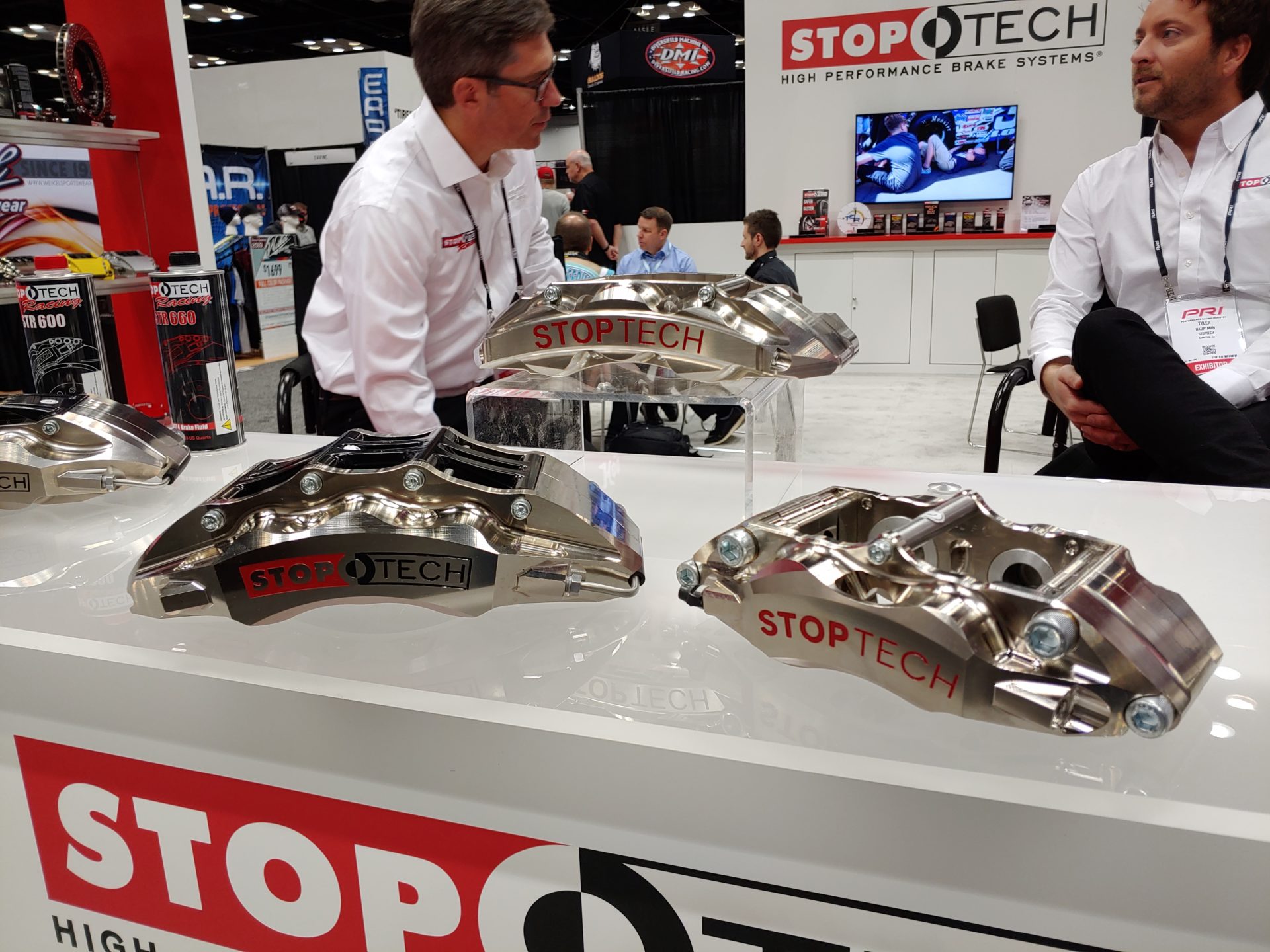
FuelTech is far more popular in drag racing circles, having burst onto the “domestic” (US) scene only a few years ago. But they’ve made a big impact. FuelTech was one of the first companies I saw that integrated a display and the ECU together, allowing for some tuning without a laptop right on the unit itself. But they still offer fully featured software for tuners.
New for 2019 is a 550 lite, which actually has no screen, targeted at users who will be doing something else for display and/or who have no need for the integrated tuning interface. One thing that isn’t new, pictured here, is the drag tree practice mode that is built into all of the FuelTech ECUs. Since your trans brake or other launch device is likely already wired into the ECU, you can practice your reaction times in your own vehicle on your own gear. As if you needed any more reasons to stay in your car.

Whether you like it or hate it, no one really cares. But the aftermarket cares about the platform, and they have started to work on supporting it.
The BMW-Toyota love child that is the new Supra features a BMW B58 engine which, according to our friends at Supertech, is essentially a Mini Cooper B48 with 2 extra cylinders. It is essentially internally identical with respect to the engine’s spinny bits — pistons, rods, valves, springs.
As such, Supertech already has a complete engine build kit available for it, and it was featured as a part of Steph Papadakis’ SEMA Live build, making around 1000hp. Not too shabby!
Last year we had commented on Supertech’s entry into the head gasket market, and they are continuing to expand their head gasket lineup to offer more thicknesses as well as more bore dimensions to match wit the various piston sizes and options that they offer for their supported platforms.

While it’s not an entirely new development for them, Fuel Safe has been transitioning many of their cell top plate designs to use an SAE standard 10-bolt pattern. Pump manufacturers like Aeromotive have been using this 10-bolt pattern for quite some time.
Since the pump and pickup assembly can essentially be a complete unit, use of this design can make for extremely fast servicing of the pump and/or the pump filter. For competition use, you can simply keep an entire spare assembly ready to go.
To service, disconnect the fluid and electrical hook-ups, unbolt the 10 bolts, yank the assembly, and then perform the steps in reverse with the new assembly. For drifting use where competition timeouts are on the order of a matter of minutes, this allows for ruling out fuel pump issues quickly.




8 comments
I’d like to see a study on the differences between split calipers like the stoptechs and forged monoblock calipers like AP/Alcons. Other than saving a few grams what do you get for a 50% price hike?
I’ve thought about putting a Fueltech ECU dash on my miata on and off since I heard about them. The support is what’s holding me back, there is a huge community of Megasquirt miata owners that can offer support. But the FT450 looks like a badass deal to me, ECU + dash + datalogger, it even has an internal MAP sensor.
I mean, it really wouldn’t be that hard of a test to do, just expensive as it’s not like they give the suckers away. You’re also going to have to try to be apples to apples, as I have a strong suspicion that some parts of AP, Alcon, PFC etc’s lineup have picked different values on the compromise scale of stiffness vs weight or are designed with different constraints. A lot of the high buck monoblock calipers are built to specific classes/configurations. Like, just as a for example, I think the STR60GT is (I think) a similar pad shape/volume to the Alcon TA6 caliper, but will it fit as big of a rotor into a 16″ race wheel? Probably not, because Stoptech probably wasn’t designing for a specific class.
The max rotor size is a good argument I hadn’t though of. You can probably get the same stiffness and rotor/pad size for half the price by going with a split caliper but if you want the biggest rotor you can fit in a wheel then monoblock would be the only option.
Which is not anything against Stoptech IMO, it’s just a “stuff designed to the limits of rules for specific applications will do better at that then a generalist design” thing.
@Nicolas Girard
Most modern racing ECUs have internal MAP as well as some level of logging. It’s really the integrated dash that is the bonus, as that’s generally a $600+ option from just about any other vendor.
For a non-forced-induction BP6 (I’m assuming NA/NB motor that doesn’t even have VVT) you really are fine with anything. If your motor is already running on the Megasquirt, you could go with one of the logging dashes like the AEM CD7-L. It’s pricey, but would round out everything you need, and in the future you could use any other ECU with that setup.
If you don’t have anything yet, the FT450 could be a great option, and the support should be pretty good. FuelTech is based right around the corner from me in Georgia and they’re super friendly. Most of your “issues” would be around wiring (no plug-and-play FT450-BP6 harness) and a base map (FuelTech probably doesn’t do many NA 4-cyls). But motors will run even with pretty bad maps and you just need to get it going well enough to get on the dyno =)
Thanks for the info, I’ve never installed an ECU myself, I’m looking at swaping my 200k miles BP6 to a later model engine BP4W or BPZ3 and the Megasquirt looks like the easiest option.
NA/NB miatas have chunky MAF sensors instead of MAP, I thought the megasquirt didn’t have an internal MAP (it does) because I’ve read about putting in a GM IAT/MAP sensor when you delete the MAF.
TIL: Turns out you do it because the MAF module you delete also has the intake air temp sensor inside, the GM part has the IAT and gives you a second MAP for barometric data.
For a first time, the plug in ECU with the wide user base is probably the more intelligent choice. The FT450 is still a great deal, it’s a bit cheaper than the MSpnpPRO, has a dash and real slick program.
The AEM dash is a cool piece but it is half the price of the Miata on its own. it would look off brand next to the knockoff Bride seats and cheapo NRG steering.
All good points. That MS3 Pro with a plug-and-play harness is going to work great. Good luck!
In theory the advantage of 1 piece calipers is less flex.
In practice I think would be hard to tell.